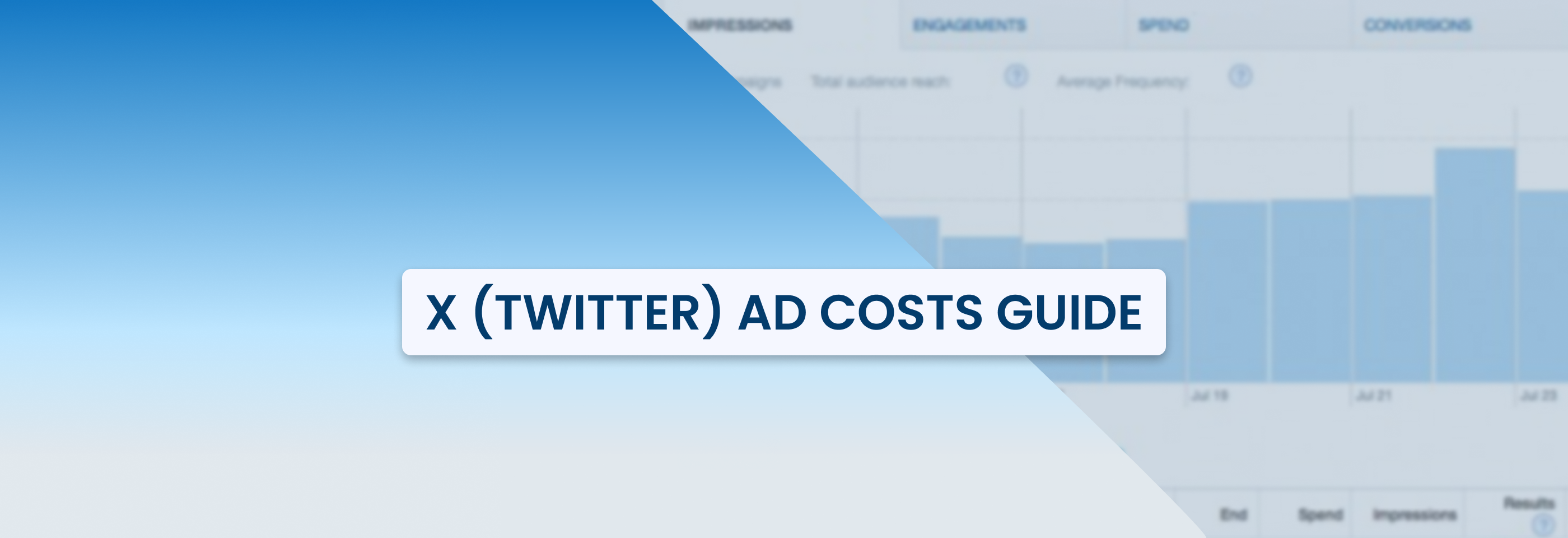Optimize Facebook Ad Budget: Reduce Ad CPM and CPC
2023-07-10
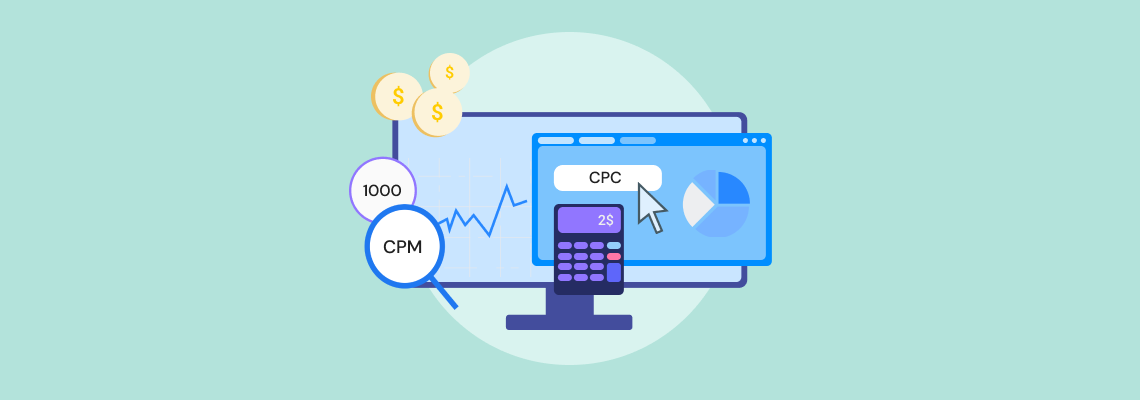
When it comes to social media advertising, Facebook is definitely one of the most popular platforms. That is not surprising at all since it now has more than 2,91 billion monthly active users worldwide. Any business or marketing specialist has a great chance to reach their target audience on Facebook and successfully run ads there.
Still, a lot of people, especially the ones new to Facebook marketing, may find launching ads confusing when it comes to the way Facebook ad cost is defined, what bidding model to choose, and so on. Such questions are crucial as making mistakes may lead to sufficient budget loss.
In this article, we will discuss the factors that influence an ad price, Facebook bid optimization, and what you can do to reduce your CPC and CPM.
How much do Facebook ads cost?
Facebook ad price concerns everyone who’s about to launch an ad campaign. Unfortunately, there is no single answer. The cost depends on a bunch of factors and not only those directly related to the ad campaign settings. Such conditions as a current season or time when the ad is shown to a user matter as well.
Or else, the country that you launch an ad at has a great impact, too. In 2021, for instance, South Korea had the highest cost per click while Pakistan had the lowest one.
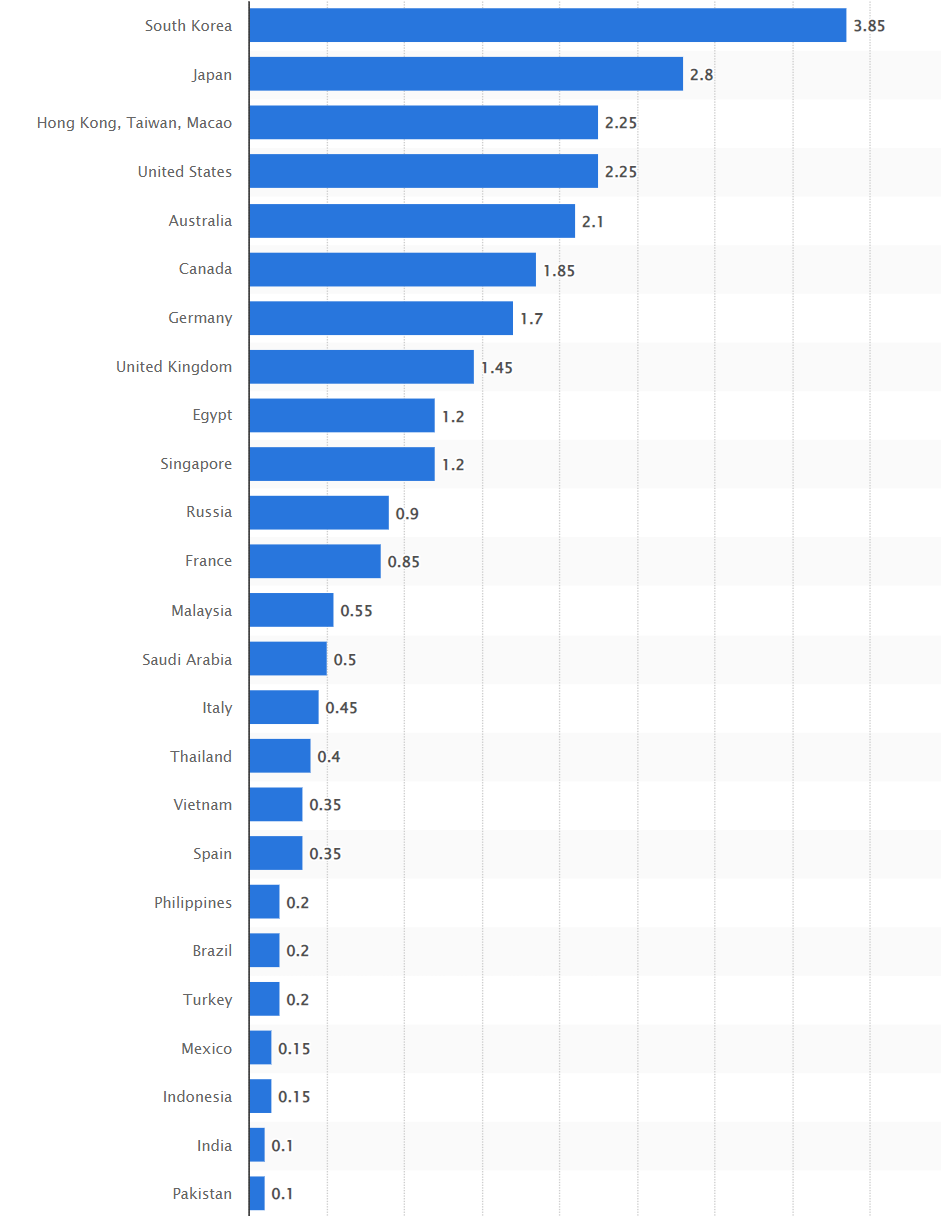
WordStream’s research of Facebook ads of 2021 revealed that the average CPC is $1.72, yet the price depends on the industry. For instance, the most expensive click is in finance and insurance ($3.77) and the least expensive one is in the apparel industry ($0.45).

Although these numbers can give a vague idea of Facebook ad cost, they can’t utterly predict the exact price of your ads. To understand the approximate amount to invest, you need to know what metrics to track and what pricing model to utilize. The most popular ones are CPC and CPM. Let’s look into what they are, what differences they have, and when to use them.
What are CPM and CPC in advertising?
The main difference between these two metrics lies in what exactly you pay for. Let’s refer to their definitions:
What CPM means
CPM is cost per mille, i.e. 1,000 impressions. It calculates the price for every thousand times when your ad is shown on someone’s screen. It doesn’t matter whether the ad was clicked on or ignored as only the number of its displays counts.
How to calculate CPM
To measure CPM, the total spent on an ad campaign needs to be divided by the number of impressions and then multiplied by 1,000.

For example, if you’ve spent $50 and got 10,000 impressions, your CPM will be $5.
What CPC means
CPC is cost per click. It identifies the price for each click made on your ad. With this model, you are not charged every time the ad is shown to someone. You will be billed only for each time someone actually clicks on the ad.
How to calculate CPC
To measure CPC, the total spent on an ad campaign needs to be divided by the number of clicks.

For instance, if you’ve spent $50 and got 25 clicks, your CPC will be $2.
As you see, these two metrics differ in whether you are charged for an impression or a click, and what model to choose depends on your advertising objectives.
If you want to build brand visibility and increase awareness so that more people know about your business, CPM is a better option. You need to keep in mind that the ad will be shown to a large number of people regardless of whether it gets any clicks at all. Still, if a click is not your current goal, CPM is exactly what you need to make your brand better known.
In case you’re willing to get new leads or even drive conversions, CPC will fit you more as the price of each click will be defined. Sure, when using this model, the ad will be shown fewer times, yet it will be targeted at those users who are more likely to click and be redirected to your website.
So, if your aim is conversions and customer acquisition, the CPC pricing model is what you need. However, if you’re trying to maximize exposure, you should consider using the CPM model instead.

To keep track of CPC and CPM, you will need to add these metrics in the Customize column section of your Ads Manager.
What defines your Facebook ad cost
For everyone thinking about optimizing CPM and CPC, it won’t hurt to look into what actually affects Facebook ad costs. Here’s the list of factors that should be taken into consideration:
- Industry
The sphere you work in influences Facebook ad cost. The more competitive the market is, the higher the ads’ prices are. According to eMarketer’s report on US Digital Ad Spending in 2021, the industries that spend most on advertising include retail, consumer packages goods, and financial services.
- Objective
Choosing the wrong objective may lead to higher ad costs. For instance, conversion-related objectives cost more than awareness-related ones. It doesn’t mean that you should choose the least expensive option. The objective must correspond to your marketing goals, otherwise, you risk not getting the desired result.
- Audience
The more advertisers are willing to target a specific audience at the same time, the higher the ad costs will be. As all ads compete against each other to be shown to a specific user, the high-competition audience will increase the ad price significantly.
- Timing
The season, the month, the day of the week, and especially the time of the day can influence the price of the ads depending on how many other people want to advertise at this specific time as well. Moreover, various events, e.g. public holidays, will also make ads more expensive.
- Bidding strategy
As we’ve already discussed, the bid you set is one of the key factors that determines your ad cost. Whatever strategy you choose, it will affect your ad spend differently, so it needs to be selected carefully.
- Placement
As you know, you may manually place your ads in such Meta products as Facebook, Instagram, Audience Network, and Messenger, or let Facebook automatically allocate your budget across the platforms where the ads are likely to perform best. Different placements have different costs depending on the current competition they have.
- Relevance and quality
Any ad needs to bring value to people who see it. It should correspond to users’ needs and make them engage with it. The more people show interest in the ad, the higher its relevance is, which will eventually lead to lower ad costs. On the other hand, the ad that is often ignored or even reported will grow in its price.
As we now know what factors influence the ad cost, it’s now time to find out how Facebook charges advertisers.
How does bidding work on Facebook?
All Facebook ads participate in an auction. Marketers compete against each other so that their ad is shown to a specific user at a specific moment in time. This is one of the reasons why the exact cost of the ad is unpredictable.
However, you shouldn’t worry about spending all your money at once as Facebook provides bidding strategies that let you keep the budget under control.
There are 3 types of bidding: spend-based, goal-based, and manual bidding. Each of them includes several strategies:
Spend-based bidding focuses on spending your full budget while trying to get the most results or value possible. It includes the following:
- Lowest cost is used to get the most results possible from your budget. Facebook will try to use up all your budget. Yet this strategy doesn’t control your CPA. If you’re willing to spend all your budget and get the most results, never mind the cost per action, this strategy is what you need.
- Highest value is perfect for those who want to maximize the value of the leads, not just increase the number of conversions. Facebook will aim to spend all your budget to get the highest value purchases. To use this strategy, you must be eligible for value optimization and have a functional Facebook Pixel or SDK set up to track Conversions events.
Goal-based bidding sets a cost or value you want to achieve:
- Cost cap fits those who want to keep their CPA around an average amount regardless of market conditions. Facebook will try to maintain the amount of money you’ve set as cost control, yet sometimes conversions will cost more and sometimes less. With this strategy, Facebook doesn’t aim to spend your full budget, so the learning phase may take longer than usual.
- Minimum ROAS strategy is available if you optimize your Ad Set for the purchase value. It is the best option for those who want to meet a specific ROAS or even exceed it. Once you set the ROAS you want to achieve, Facebook will focus on maintaining it rather than on generating as much value as possible.
Manual bidding allows you to control how much you can bid across ad auctions:
- Bid cap would work for advertisers who can calculate the right bid. Here, you set the maximum bid across auctions yourself instead of making Facebook bid depending on your spend or goals. It is considered an advanced strategy and is mostly used by experienced advertisers.
Now, knowing all the factors that might influence the cost of your ads, let’s find out what exactly you can do to spend less and still get great results.
How to reduce Facebook ad cost
The main solutions for cost optimization include the following:
- Select the right campaign objective
This is one of the first steps in setting up an ad campaign and it should be done with your eyes open. Define what you want to achieve with your ad campaign. If you want more people to know about your brand, pay attention to the Awareness category. In case you need more users to interact with your business, Consideration is your choice. For those willing to actually sell a product both online and offline, Conversion is the best type.
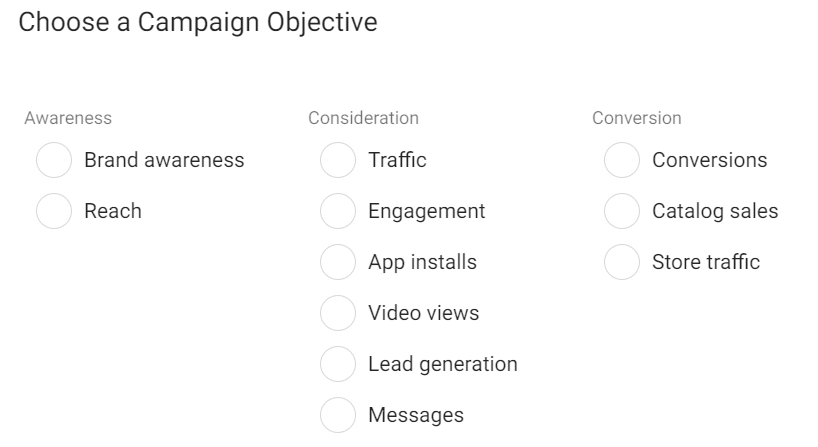
- Find out the best-performing time
Think about the hours when your ads tend to show better results and then run the next campaign on the same schedule. Keep in mind that if holidays are coming soon, the ad prices may be much higher than usual.
Don't forget that frequency also matters. Not only will you waste money for nothing by showing the same ad to the same users multiple times, but you also risk getting your reputation affected.
- Use low-competition audiences
The more people want to target the audience, the higher the ad costs are. You should consider creating a specific audience, for example, by using ConvertBomb’s Interest Explorer feature to target users not reached by your competitors.
Also, in case you target several audiences, use Audience Overlap tool. It will check if there are the same users in the audiences so that you don’t bid against yourself in the ad auction which will negatively influence your budget.
- Reconsider your creatives
At least once in a while, it would be a great idea to refresh the creatives you use. A new ad will attract more attention, especially if you do your best to make it as appealing as possible. This way, you’ll also avoid ad fatigue as the ad will constantly be updated.
Moreover, it won't hurt to test different ad formats. For example, if you need to present a lot of information, you should use a carousel or a video instead of single-image ads. This way, you will also be able to find out what type of ads attract your audience most and then stick with this format.
- Pay attention to Ad Relevance Diagnostics
All your ads’ performances are assessed by Facebook. It looks at how relevant each ad is for specific users before showing it to them. Ad Relevance Diagnostics include quality, engagement rate, and conversion rate rankings. The higher these rates are, the lower the ad price is, so make sure your ad caters to the needs of those who see it.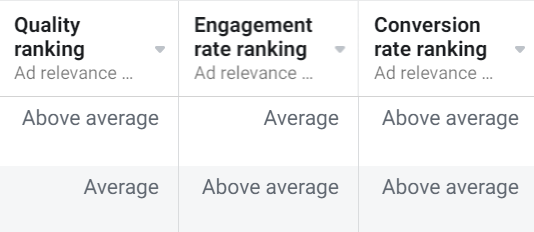
To see Ad Relevance Diagnostics, you'll need to enable it in the Customize column section of your Ads Manager. Note that it can be shown only for ads that have more than 500 impressions.
- Apply automated rules
You can manually monitor your ads and pause them if they are too expensive and non-profitable. Yet why not hand this routine to a machine with the help of automated rules? The budget won’t be wasted on low-performing ads and will be redirected to more successful ones absolutely automatically, thus optimizing CPC and CPM.
- Choose the appropriate bidding strategy
The right bidding strategy will keep track of your budget. Sure, you can just set a low budget in order to not exceed it and not spend a lot but this way you also risk missing out on acquiring good leads and, subsequently, conversions.
- A/B test your ads
Remember that practice makes perfect. Only by constant testing, you'll get an idea of which ads perform great and which don't. It will also allow you to make all the necessary changes immediately, i.e. turn off the underperforming ads and keep the ones that show great results, thus keeping your ad spend under control.
Conclusion
Price formation and ad costs on Facebook depend on various factors. Understanding the mechanism of Facebook ad auction and bidding models can turn out to be complicated not only for beginners but for experienced marketing specialists as well. We hope that our article has helped you get to the bottom of bidding strategies, the ways to optimize your CPC and CPM, and, in the end, reduce your ad costs.

